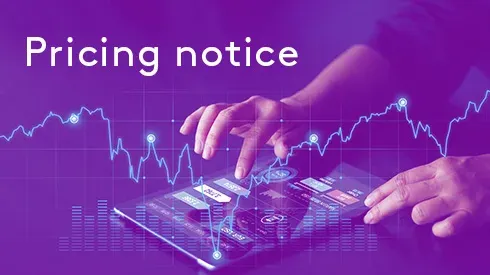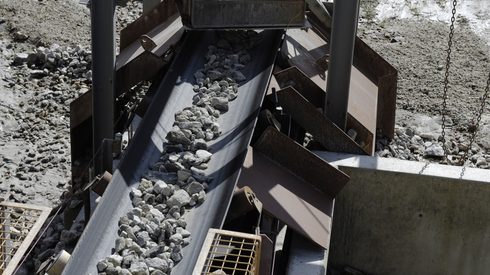Ukraine became the largest supplier of iron ore to the European Union in March, plugging the gap left by Russian materials. Sales volumes reached 2.1-2.3 million tonnes per month, up from the usual 1.4-1.5 million tonnes. At that time, Ukrainian iron ore accounted for 30% of Europe’s needs, according to GMK Center data.
But exports from Ukraine fell by 23% in June after a number of iron ore facilities in the country suspended operations, due to the continuing problems with transportation caused by the war.
Metinvest recently announced that it will stop operating several mining and processing centers – Southern GOK, Ingulets GOK and Northern GOK – due to rising transportation costs and congestion on the railways, rising energy rices and falling steel prices globally. The miner has been forced to abandon seaborne deliveries because of Russia’s continuing bombardment and blockading of Ukrainian ports.
Fastmarkets’ index for iron ore 62% Fe fines, cfr Qingdao, was $114.31 per tonne on July 7, compared with $161.65 per tonne on March 7.
And Fastmarkets’ index for iron ore 65% Fe Brazil-origin fines, cfr Qingdao, was at $127.30 per tonne on July 7, compared with $191.70 per tonne on March 7.
Falling steel prices are typified by Fastmarkets’ price assessment for steel hot-rolled coil, import cfr Vietnam, which fell to $650-672 per tonne on June 24 from $930-940 per tonne on April 8, and Fastmarkets’ price assessment for steel billet export, fob main port Turkey, which dropped to $580 per tonne on June 23 from $920-950 per tonne on March 10.
The sharp increase in volumes of iron ore being transported by rail was causing hold-ups at the Ukraine-Europe border, with an estimated 42,000 wagons lined up at the border compared with the usual throughput of 1,900 railcars a day. Europe railfreight infrastructure and sea ports are also struggling to deal with the sudden increase in iron ore volumes, GMK Center data shows. Tariffs for railway transportation in Ukraine increased by 70% from July 1.
But the rail network cannot compete with seaborne deliveries in terms of volumes shipped, so there has been a marked decline in overall shipments from Ukraine.
“Iron ore export volumes to the EU have dropped to 0.9-1.0 million tons in recent months. These volumes are two times lower than earlier this year and 50% lower than traditional volumes. European steel producers now face the issue of replacing the lost Ukrainian iron ore,” GMK Center chief analyst Andrii Tarasenko said.
The poor demand for downstream steel and expensive logistics would mainly affect supplies of sintering ores, Tarasenko added.
Before Russia’s invasion, Ukraine exported about 19 million tonnes of iron ore annually to Europe, including 5-6 million tonnes of sinter ore, 5-8 million tonnes of concentrates and 5-9 million tonnes of pellets – from a range of producers including Metinvest, ArcelorMittal, Sukha Balka, Zaporizhzhia Iron Ore, Kryvyi Rih Iron Ore and Rudomain.
“Ukrainian iron ore are delivered to the Czech Republic, Poland, Slovakia, Austria, Germany, and other EU countries. Leading European steel plants, in particular, ArcelorMittal, US Steel, Voestalpine, Thyssenkrupp, [make] steel from Ukrainian iron ore,” GMK Center analyst Andrii Glushchenko said.
While banks and analysts have pointed to the possibility of European steel producers looking to Brazil for iron ore supply, this may not be feasible due to the two-month voyage times from Brazil to Europe, instead of the typical 8-14 days from Ukraine,
“It’s likely that iron ore will become more expensive for European steelmakers, due to the more expensive logistics and replacing cheaper sintering ores with concentrates or pellets. It is unlikely that the increase in costs will be passed on to the buyer in the current conditions of falling demand, [however, which] will reduce the margins of European steelmakers, which are already under pressure from high energy prices,” Tarasenko said.





